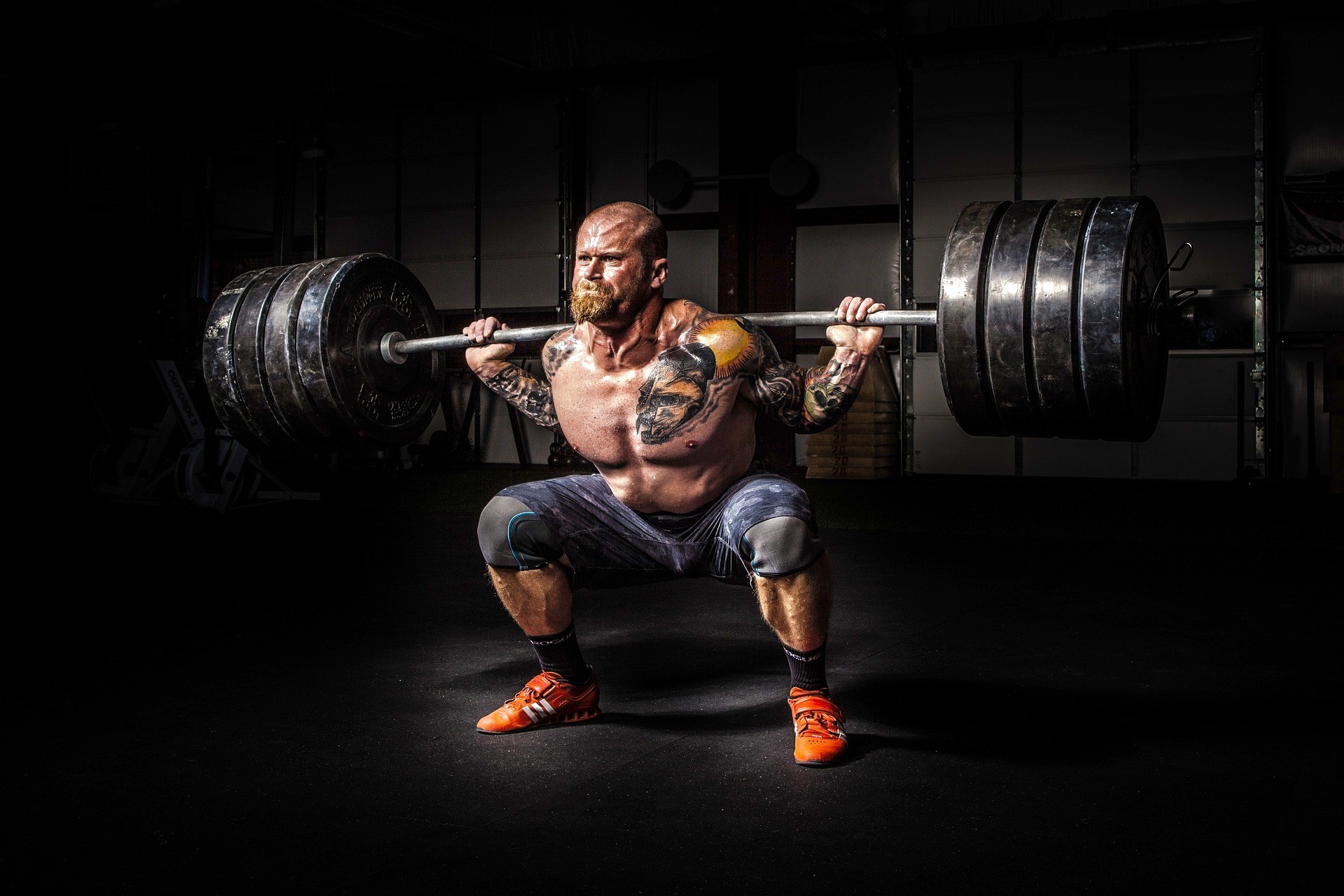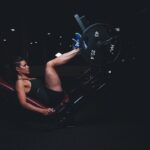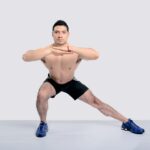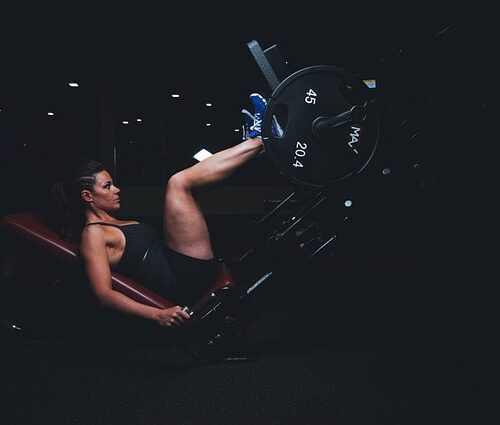
Key Takeaways
Incorporating weighted vests helps the user get additional weight on his body which automatically makes every exercise difficult and effective at the same time.
Weighted vests can also help in lower body workout performance as they help improve strength and endurance over time.
Adding a weighted vest in your workout routine makes basic exercises like squats and lunges more productive.
As with all exercises, appropriate use of the vest is crucial to minimizing injuries and achieving optimal results.
Use easily manageable weights and then progress when ready so as not to overdo it and injure the body.
If you want to develop more strength in your lower body muscles, one useful training addition is using a weighted vest. This article will explain what a weighted vest is, its advantages, and how to use it correctly during workouts to strengthen your lower body muscles.
What is a Weight Vest and How Does it Work?
A weighted vest is a type of equipment that is worn around the body and increases one’s overall body weight when exercising. This increased weight may cause one’s lower body to become more powerful. Here’s how it works:
Exploring the Components of a Weighted Vest
A typical weighted vest consists of:
Weights can be added or removed according to one’s fitness levels.
Straps to hold the vest in position during activities.
Breathable fabric: This enables easy cooling of one’s body whilst exercising.
How Weight Distribution Affects Your Workout
The vest’s weight distribution affects how the body mechanics function during a physical activity. Heavy distribution of the weight in all areas helps to maintain body equilibrium and resistance training in individuals. However, all the weight in one spot can result in pain and injuries.
The Mechanics of Wearing a Weighted Vest During Exercises
When you wear a weighted vest, your body has to work harder to perform movements. This means:
You engage your muscles considerably more. For example, your legs and core.
You expend more energy because of the need to exert additional effort.
You gradually increase your strength and endurance.
What are the Benefits of Using a Weighted Vest for Lower Body Workouts?
If used appropriately, a weighted vest can tremendously maximize your performance during low-region body workouts. It has numerous benefits, such as increased muscle mass, core stability, and improved bone density. Here are some key advantages of incorporating a weighted vest into your routine:
More Muscle Activation: Using weights allows for more muscle fibers to be activated, resulting in greater benefits.
Better Strength and Stamina: Working with a weighted vest can enhance your general strength and endurance levels[1].
Specific Glute and Thigh Development: These areas are most effectively targeted when using a weighted vest during workouts.
What are the Best Weighted Vest Exercises to Try for Lower Body Strength?
Engaging in a weighted vest workout can really help you strengthen your lower body.
Top Weighted Vest Exercises to Target Glutes and Hamstrings
Here are some great exercises to try:
Weighted Squats: Stand with your shoulders apart and squat down while wearing the vest. Targets glutes and thighs.
Walking Lunges: Wear a weighted vest and perform 20 walking lunges, 10 with each leg, for a total of three sets. Rest for 60 seconds between sets. This exercise targets the hamstrings and glutes.
Step-Ups: Find a sturdy bench or step. Wearing the vest, step up with one leg and step back down. Strengthens legs and enhances balance.
Effective Squat Variations Using a Weighted Vest
To make your squats even better, try these variations:
Front Squats: Keep the vest tucked against yourself while squatting. This is going to alter the weight change and engage the core further.
Sumo Squats: Keep your feet wider than the shoulder width while squatting. This concentrates more on your inner thighs as well.
Single-Leg Squats: Try performing a squat on one leg while the other leg stays outstretched in front. This one is hard, but it is good for strength.
Weighted Lunges and Other Lower Body Exercises to Boost Strength
In addition to lunges, consider these exercises:
Deadlifts: Stand straight, place the feet in a hip-width distance, bend the hips and knees and once again lift the weight back. This targets the back and legs knee-extensions.
Calf Raises: The heels must be raised while standing on the edge of the step while still wearing the vest. This works the calves.
Glute Bridges: Lie on your back with your knees bent. Lift your hips while wearing the vest to work your glutes.
How to Use a Weighted Vest to Improve Squats and Lunges?
Using a weighted vest can significantly improve your squats and lunges exercises, leading to stronger body muscles.
Adjusting Your Squat Form When Wearing a Weighted Vest
When you wear a weighted vest, it’s important to adjust your squat form to maintain balance and safety. Here are some tips:
Keep your chest up to allow your back to be neutral.
Tighten your abdominals: Tactical breathing will allow for your lumbar region to be very well protected.
Go lower: Squat to the depth desired as if one is about to sit on a stool.
Tips for Performing Weighted Lunges Safely and Effectively
Weighted lunges can be a great way to build strength. To do them safely:
Pace yourself: Make sure that one of their legs is way out in front of the other one staggering out one from the other.
Drop the knee of the opposite leg: Place the other knee as close as possible to the floor where it can stay comfortably.
Push back up: Stress the anterior leg to bring the body back to a standing position.
Maximizing Lower Body Muscle Engagement with a Weighted Vest
To get the most out of your workouts with a weighted vest, consider these strategies:
Use a lighter weight: Increase the load as body strength increases.
Focus on form: Body positioning is everything because proper posture ensures that injuries do not occur.
Include a range of exercises: This is done so multi-muscle groups are all attended to.
How Does Wearing a Weighted Vest Affect Cardio Workouts?
Using a weighted vest while doing cardio workouts can greatly enhance stamina, help burn calories faster, and assist in building muscle strength. These advantages make it a smart addition to your cardio workout.
Adding Resistance to Cardio: Benefits of Weighted Vests
Weighted vest training comes in handy during cardio exercises in a workout session. The vests boost activities in different scenarios, as illustrated below.
Increased calorie expenditure: Due to the increased body weight, the condition experienced encourages the body to perform more work, and thus a few more calories are likely to be burned.
Better endurance: Over time, exercising with a weighted vest may increase an individual’s stamina so that regular cardio feels less strenuous.
More powerful muscles: The use of weighted vests assists in the building of muscles, especially legs, and core[2].
How Weighted Vests Boost Your Running Performance
When you run while wearing a weighted vest, the following improvements may be evident:
Muscles work more: Core and leg exercises can assist in boosting your running speed.
Better bone density: Extra weight can help bone strength, making them stronger and less likely to be broken.
Higher VO2 Max—means the body has a good ability to utilize oxygen, which is a plus for fitness.
Enhancing Walking and Hiking Workouts with a Weighted Vest
Weighted vests may be worn while walking or hiking to improve the intensity and productivity of these exercises. Here are some recommendations:
Begin with lighter weights and increase the weights only when you are comfortable.
Be conscious of your posture so that there is no added strain.
Incorporate drills of quicker walking or climbing at intervals to enhance fitness.
Are There Any Considerations and Precautions When Wearing Weighted Vests?
Using a weighted vest is beneficial in several ways, but it should also be noted that there are certain safety procedures that need to be applied in order to be both safe and effective. Here are some considerations:
Preventing Overtraining and Injury While Using Weighted Vests
Use the lighter weight first to see how it feels.
Learn to observe your body, in case you feel pain, don’t continue.
Avoid using the vests repeatedly, allow for rest periods.
Importance of Proper Fit: Avoiding Discomfort and Strain
Make sure the vest is snug but not too much.
Make sure it is fastened where the straps cannot move when working out.
Be aware of any rubbing and possible sore points on the skin.
Final Thoughts on Using a Weighted Vest for Lower Body Strength
Using a weighted vest gives you a good chance of improving your lower body strength. It does generate added resistance to the workouts meaning the muscle has to work harder. And as a result, it can help in building stronger legs as well as enhancing your overall fitness. The power of weight should be looked at carefully and adjusted to a comfortable amount.
Frequently Asked Questions
What is a weighted vest?
This is a type of clothing that has special built in weight. It is useful to upgrade regular muscle activity of a person to a higher intensity.
How does a weighted vest improve workouts?
In a exercise that utilizes a weighted vest, more weight is added to a person. This makes the intervention strained on the person, who in turn makes use of the muscles aimed at overcoming this load.
Can I use a weighted vest for cardio exercises?
Yes! Weighted vests can be worn during running or brisk walking which fall under cardio exercises.
How should I start using a weighted vest?
Wearing a weighted vest for the first time can be mentally tough so it is best to wear the vest for a minimum weight initially. Only as the body starts accepting the vest, start adding weights.
What exercises are best with a weighted vest?
Some great exercises to do with a weighted vest are squats, lunges, and push-ups. All these exercises work to increase the strength of the lower region of the body and general fitness.
References
- Kim, J. W., Kim, E. S., & Yoon, S. J. (2023). Weighted Vest Intervention during Whole-Body Circuit Training Improves Plasma Resistin, Cardiovascular Disease Risk Factors, and Cardiorespiratory Fitness in Normal-Weight Obese Women. https://doi.org/10.20944/preprints202308.1456.v1
- Pagan, J. I., Bradshaw, B. A., Bejte, B., Hart, J. N., Perez, V., Knowles, K. S., … & Stock, M. S. (2024). Task-specific resistance training adaptations in older adults: comparing traditional and functional exercise interventions. Frontiers in Aging, 5, 1335534. https://doi.org/10.3389/fragi.2024.1335534




